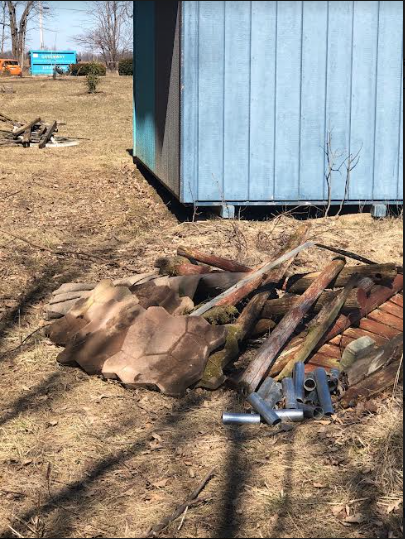Restored Property Attracts a Rufous Hummingbird
By Kathleen Hartman, Property Owner
For most of September, a gorgeous adult male Rufous Hummingbird has resided in our front yard in Westfield. Discovering this flash of orange was a particular joy since we couldn’t attract even a single Ruby-throated Hummingbird two years ago.
In late June of 2020, we moved into this desolate-looking four-acre Westfield property. The space was wonderful but barren. There were two mature Callery Pear trees in the back, a hideous patch of dense ornamental grass in the front, an empty trampoline pit, and sterile grass in every direction. However, the property also had a big patch of black raspberry bushes, some native Illinois Roses, Common Milkweed, and a whole lot of potential.
Our first summer was depressing. There’s no other word for it. It was too late in the summer to plant anything and the only birds we could see from our house were some Turkey Vultures that stopped briefly for raw chicken legs. We spent summer and fall removing invasives such as Multiflora Rose, White Mulberry trees, the two Callery Pears, and many smaller ones. We also pulled three large dumpsters worth of trash out of the woodland perimeter of our property.
Having lived in a beautiful woodland plot of less than acre in Castleton, we were used to cooling shade and great birding from every window. Many varieties of warblers, including a Golden-winged Warbler and a Hooded Warbler, visited a shallow bird bath easily visible from our kitchen-sink window. Springtime came with a carpet of native spring ephemerals. Still, the habitat potential of our new location was enormous.
In the fall, Eco Logic planted 150 native canopy trees in the first phase of our restoration, while we planted another 100 around our house. Eco Logic also prepped an acre of grass, then planted a diverse mix of native prairie grasses and wildflowers intended to provide four seasons of interest, as well as vital habitat and nectar sources for pollinators. Kicking these projects into high gear was exciting, but the trees seemed small and inconsequential and the future prairie was brown and bleak.
Our first spring brought hopeful signs, although the need to regrade the ground around our home meant moving almost 30 trees, an entirely unrewarding task. Still, Eastern Bluebirds and Tree Swallows moved into nest boxes. Eastern Kingbirds perched on the tops of spindly young trees and the former trampoline pit was turned into a wildlife pond, which quickly drew in several species of frogs. We added more native trees, shrubs, and wildflowers.
To ensure a successful prairie, we had to stay disciplined, mowing whenever it reached about a foot tall so that slower-growing natives would not be crowded out. Elsewhere on our property, invasives still had plenty of room to thrive. Watering the young trees became a major concern during the many long hot and dry stretches. In the fall, Eco Logic planted 150 native understory trees and shrubs and I replanted the now-regraded ground adding as much diversity as our soil conditions would allow.
The two-year mark was a turning point. We only had to mow the prairie once, in May, and by late spring, it was full of color and life. Still, June and July were hot and dry and with three hoses going, I could water about one-fourth of the young trees over the weekend, while pulling clumps of Queen Anne’s Lace and Red Clover. While I was busy watering, foxtail sprouted through my raised wildflower beds.
Just when I needed a lift, I found three Monarch caterpillars on a patch of Swamp Milkweed. I brought them inside and released one male and two female Monarchs a few weeks later into our prairie. Rains in August gave me a watering break and the prairie became even more colorful. Then a flash of flying orange caught my eye during the long Labor Day weekend.
I assume that the Rufous Hummingbird was attracted by the abundant insect life and nectar-producing plants in our yard. I hope that he gains the necessary body weight to complete his migration, though as of this writing, he is still visiting, along with numerous hatch-year Ruby-throated Hummingbirds.
The Rufous was successfully banded and if it returns next year, I promise to share the news. Every birder that came to see him has been enthusiastic, kind, and considerate. It’s been a true pleasure meeting the Indiana birding community and learning from so many experts these past few weeks. This may have been a once-in-a-lifetime experience, but I hope not. I’ll be watching our trees and feeders with extra care …
Top photo courtesy of Steve Bradley
Bottom hummingbird photo courtesy of Michelle Holycross and property photos courtesy of homeowner.







